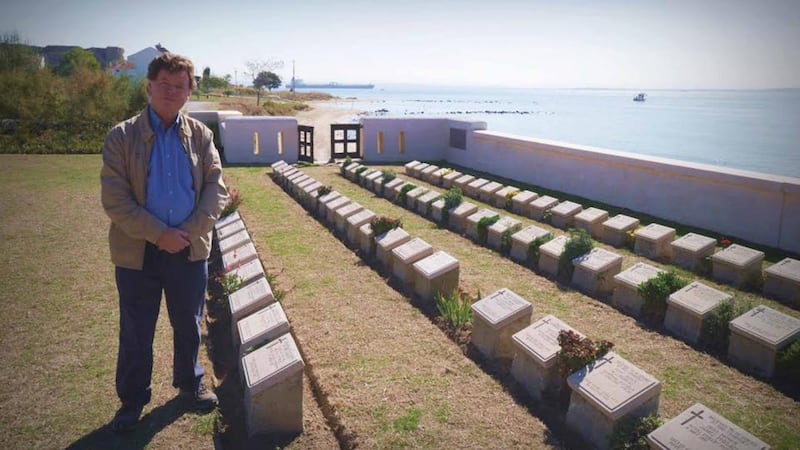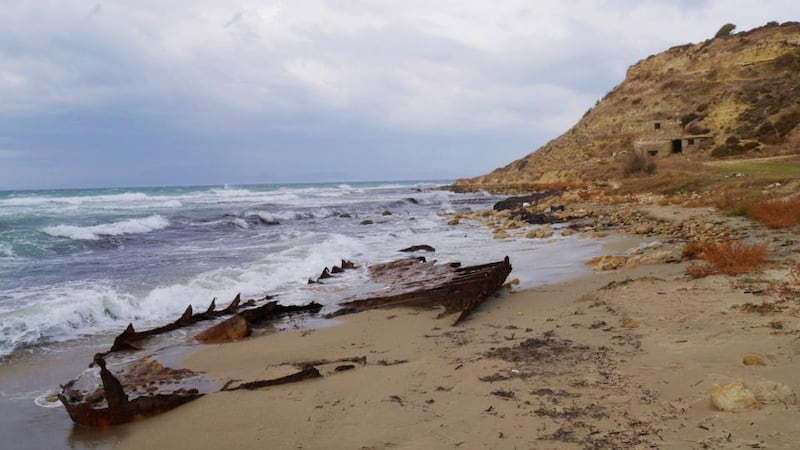Gallipoli was one of the great military disasters in history.
Some 80,000 Turks and 50,000 British, French, Australian and New Zealand troops died in a failed attempt to take the Gallipoli peninsula.
Here RTÉ political correspondent David Davin-Power writes about his family's involvement in the campaign and the documentary he has made for RTÉ television.


By any standards, Gallipoli was a cynical military and political enterprise. Winston Churchill, then first Lord of the Admiralty, wanted "an alternative to chewing barbed wire in Flanders", but one cannot help but wonder if what he wanted was in reality a military victory he could claim for himself.
He helped to pitch Turkey into the arms of the Kaiser by seizing two of their dreadnoughts before they could be delivered from the British shipyards that built them.
Spoils of war
Many in Turkey today feel the Allies wanted the crumbling Ottoman Empire - which would have happily sided with the Allies - vanquished so they could distribute their territory as the spoils of war.
But that was of little interest to the Irishmen who embarked on what they variously described as an “adventure” or an “enterprise”.
The first wave were largely professional soldiers, but their training was no protection from the well prepared Turkish forces dug in on the beaches of Cape Helles.
This was where "the sea ran red with blood" according to one Royal Air Corps pilot overhead, and where four days saw more than a thousand Irish casualties.
Later, in August, it would be turn of the so called "Pals" amateur soldiers drawn from the ranks of the professions to form the short-lived 10th Irish Division, the first such unit of the British Army to be drawn exclusively from this island.
They were to perish around Suvla Bay - badly led, badly trained, and if truth be told, badly exposed by their own lack of experience.
Their losses were to cut a swathe through the Irish professional classes at home.
Black crepe
If April saw many doorways around the Liberties draped in black crepe, the autumn saw the telegrams dropping on the doormats of Kingstown and Foxrock.
Those telegrams brought devastation to prosperous families like the Lees, who were to lose one son - John Bagenal Lee, and to have another return deeply traumatised by his experiences.
There were Irish casualties in Australian regiments too, like Tipperary emigrant Philip Brennan. Unlike Lee, he at least has a memorial in a Gallipoli cemetery.
The Commonwealth War Graves Commission could only begin its work years after the conflict. Its staff raked the peninsula for the piles of bones that were all that was left of the fallen, and in the days well before DNA analysis could only identify a handful.
And there was Irish heroism too. In his native Whitegate in Cork, William Cosgrove and the VC he won for his part in clearing barbed wire defences from a Cape Helles beach are still remembered.
Inevitable evacuation
As the year turned, the inevitable evacuation got under way, an operation that was the only successful element of the campaign.
One of the last officers off the peninsula was Dublin medic Andrew Horne, whose letters and photographs have been given to the National Museum by his delightful and doughty twin daughters, both very much to the good a hundred years on.
We have chronicled some of their stories in our documentary, Gallipoli - Ireland’s Forgotten Heroes.
RTÉ was very lucky to have as a co-director Mike Lee, a grandnephew of those Lees that fought there.
My own grandfather was also there in a supporting role as a sergeant major in the Army Service Corps.
Why is it important to remember Gallipoli 100 years on?
Well, first of all to confound those who brushed what was a military disaster under the carpet a century ago.
Then to commemorate the notion that even in failure there can be nobility.
Perhaps most of all, to vindicate the notion that history does not belong to those who sought to hand down a monochrome version for so many years, and to illustrate for a new generation that that amazing decade from 1913 to 1923 was so confusing and many-stranded that it is in many ways a miracle that the nation it spawned survives in such a healthy state in 2015.
Gallipoli: Ireland’s Forgotten Heroes is on RTÉ One Television at 10.15pm on Tuesday, April 21st.









